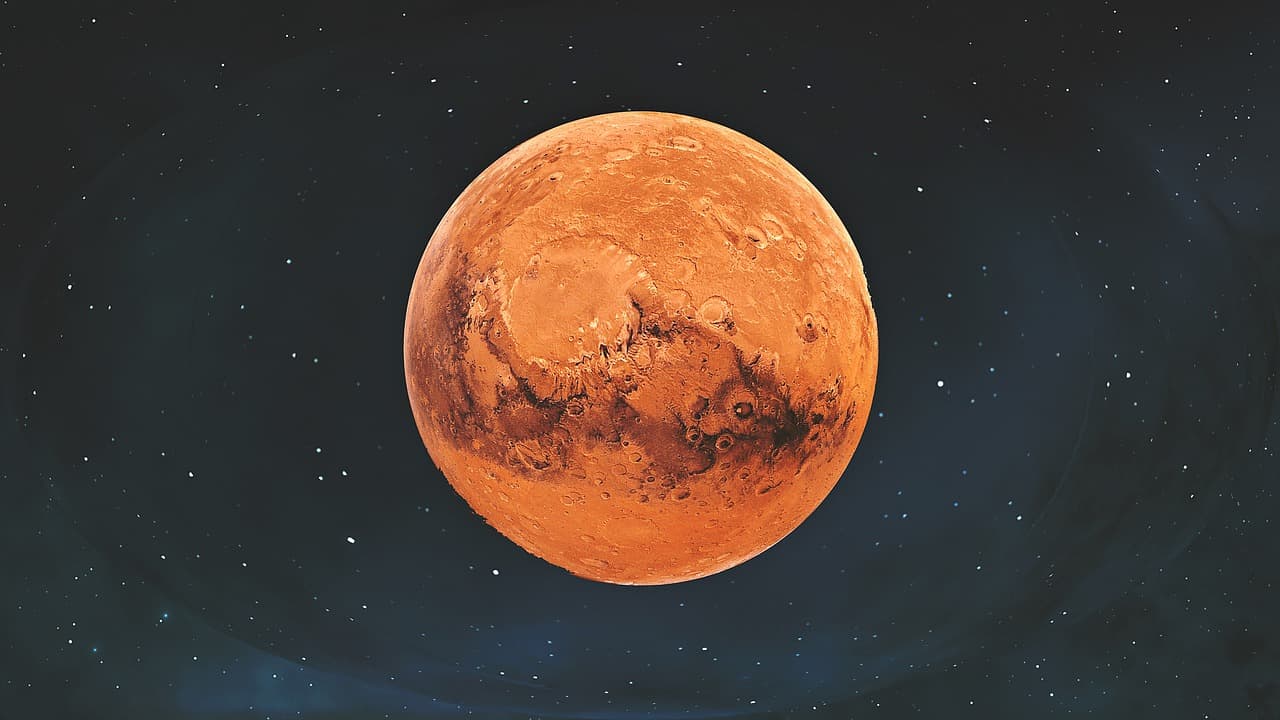
Ever since Elon Musk and his SpaceX specialists began exploring Mars, many people have become interested in this amazing planet
For now, no flights to Mars are planned, although there are assumptions that it will be prepared for human habitation even before 2025! For the moment we can only dream about life on Mars, but it is worth to get acquainted with interesting facts about it.
Scientists were surprised to find that there is water on Mars. It is hidden in ice caps at the poles. In this frozen form, it could have survived for thousands or even millions of years. If it could be dissolved, it could form an ocean 11 meters deep. Unfortunately, water cannot exist on this planet in its liquid state. It would immediately sublimate or freeze, due to very low pressure. Water could have appeared on Mars earlier, when it had a slightly thicker atmosphere. Today, only traces of former riverbeds remain, which are visible thanks to specialized cruisers.
Very violent sandstorms occur on Mars. They are quite similar to those found on Earth, but differ in strength and duration. They can even cover the entire globe. This is a danger to space probes on the planet, which regularly study the conditions on Mars. Sandstorms occur much more often on this planet because it is located closer to the Sun. They are also affected by a change in the planet’s angular momentum relative to the solar system’s center of mass.
Being on Mars, we are three times lighter than on Earth. For example, a person weighing 100 kg on Earth will weigh just over 30 kg on Mars. It has been calculated that the gravity on Mars is about 62.5% of that we have on our home planet.
The color of Mars has to do with its much higher iron content, which is different from that contained in Earth’s crust and mantle. Atmospheric oxygen began to react with the iron on the surface, which is why the planet now has this hue.
A very interesting issue is also the time on the planet. “Red Planet” circles the Sun in an elliptical orbit in about 687 Earth solar days. For Martian days, it will be 670 days. It also has a slightly greater inclination of the equator to the plane of the orbit – it is 25 degrees. For example, there is a big difference between the duration of the seasons on Earth and Mars – in the northern hemisphere summer lasts 177 days, spring 194 days, autumn in turn 142 days, and winter 156. This difference in the duration of the seasons is due to the smaller size of Mars compared to Earth.
This planet has two moons, Phobos and Dejmos. The first one orbits Mars in 7 hours and 39 minutes, while the second one requires as much as 30 hours and 18 minutes. They differ from each other in dimensions: Phobos has dimensions of 27 × 21 × 19 km, and Dejmos is smaller – its size is 15 × 12 × 11 km. Both moons are irregular in shape and their average densities are 2.0 g/cm3 for Phobos and 1.7 g/cm3 for Dejmos.
Mars billions of years ago may have looked like Earth. It still has visible riverbeds, canyons, and even mountainous terrain and plains. That life may have once existed on Mars is hinted at by new research that has discovered frozen water at the poles, among other things. Low pressure and the planet’s distance from the Sun unfortunately do not currently allow life to evolve on the planet again.
Mars is a planet on which we Earthlings would find it difficult to live. All because of the temperatures that prevail on it. During the day, you can encounter temperatures higher than 55 degrees Celsius in summer. In winter it drops to as low as -130 degrees Celsius. As you can see, temperatures on Earth are not so terrible at all. Interestingly, the setting Sun on Mars has a blue tint.
Photo: Bruno Albino/Pixabay